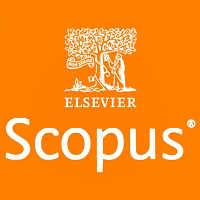
Статья размещена в открытом доступе и распространяется на условиях лицензии Creative Commons Attribution (CC BY).
ОРИГИНАЛЬНОЕ ИССЛЕДОВАНИЕ
Индивидуальные особенности асимметрии биоэлектрической активности жевательных мышц в организации жевательной функции
1 Российский национальный исследовательский медицинский университет имени Н. И. Пирогова (Пироговский Университет), Москва, Россия
2 Институт высшей нервной деятельности и нейрофизиологии Российской академии наук, Москва, Россия
Для корреспонденции: Ольга Юрьевна Гусева
ул. Островитянова, д. 1, 117513, г. Москва, Россия; ur.kb@avesug-o
Благодарности: благодарим профессора И. В. Погабало за консультативную помощь по методикам регистрации и анализа электромиограмм.
Вклад авторов: А. Ю. Шишелова — идея, концепция и дизайн исследования, сбор и обработка материала, статистическая обработка данных, написание и редактирование статьи; О. Ю. Гусева — концепция и дизайн исследования, сбор и обработка материала, литературный обзор, написание и редактирование статьи; И. С. Копецкий — редактирование и утверждение статьи для публикации; В. Ансари — сбор материала, литературный обзор.
Соблюдение этических стандартов: исследование одобрено этическим комитетом РНИМУ имени Н. И. Пирогова (протокол № 250 от 21 апреля 2025 г.).
- Алявия О., Нишанова А., Гулямова С. Функциональная система, обеспечивающая процессы пищеварения в ротовой полости. Стоматология. 2018; 1 (70): 54–57.
- Gerstner G, Madhavan S and Crane E. Mammalian Oral Rhythms and Motor Control. Biomechanics in Applications. InTech. 2011. Available from: http://dx.doi.org/10.5772/19501.
- Piancino MG, Isola G, Cannavale R, Cutroneo G, Vermiglio G, Bracco P, Anastasi GP. From periodontal mechanoreceptors to chewing motor control: A systematic review. Arch Oral Biol. 2017; 78: 109–121. DOI: 10.1016/j.archoralbio.2017.02.010.
- van der Glas HW, van der Bilt A, Abbink JH, Mason AG, Cadden SW. Functional roles of oral reflexes in chewing and biting: Phase-, task- and site-dependent reflex sensitivity. Arch Oral Biol. 2007; 52 (4): 365– 369. Available from: https://doi.org/10.1016/j.archoralbio.2006.10.022.
- Nordstrom MA. Insights into the bilateral cortical control of human masticatory muscles revealed by transcranial magnetic stimulation. Arch Oral Biol. 2007; 52 (4): 338–42. DOI: 10.1016/j.archoralbio.2006.09.013.
- Onozuka M, Fujita M, Watanabe K, Hirano Y, Niwa M, Nishiyama K, et al. Age-related changes in brain regional activity during chewing: a functional magnetic resonance imaging study. J Dent Res. 2003; 82: 657–660.
- Quintero A, Ichesco E, Myers C, Schutt R, Gerstner GE. Brain activity and human unilateral chewing: an FMRI study. J Dent Res. 2013; 92: 136–42.
- Pyo CY, Kim TH, Kim DH. Association between masticatory muscle activity and oral conditions in young female college students. Anat Cell Biol. 2021; 54 (4): 479–88. DOI: 10.5115/acb.21.107.
- Almotairy N, Kumar A, Trulsson M, Grigoriadis A. Development of the jaw sensorimotor control and chewing — a systematic review. Physiol Behav. 2018; 194: 456–65. DOI: 10.1016/j.physbeh.2018.06.037.
- Гурижева М. И. Связи двигательных и визуальных проб, отражающих функциональную асимметрию полушарий головного мозга девушек. Бюллетень медицинских интернет-конференций. 2017; 7 (6): 1154–8.
- Bogdanov V Type of correlation between bite force and EMG activity of the temporalis and masseter muscles during maximal and submaximal clenching. Folia Medica. 2023; 65 (6): 975–85. Available from: https://doi.org/10.3897/folmed.65.e107180.
- Ferrario VF, Sforza C, Colombo A, Ciusa V. An electromyographic investigation of masticatory muscles symmetry in normoocclusion subjects. J Oral Rehabil. 2000; 27 (1): 33–40. DOI: 10.1046/j.1365-2842.2000.00490.x.
- Hotta GH, Oliveira AIS de, Oliveira AS de, Pedroni CR. Electromyography and asymmetry index of masticatory muscles in undergraduate students with temporomandibular disorders. Brazilian Journal of Oral Sciences. 2015; 14 ( 2): 176–81. DOI: 10.1590/1677-3225v14n2a15.
- Kimoto K, Fushima K, Tamaki K, Toyoda M, Sato S, Uchimura N. Asymmetry of masticatory muscle activity during the closing phase of mastication. Cranio. 2000; 18 (4): 257–63. DOI: 10.1080/08869634.2000.11746139.
- Na SH, Kang DW. Comparative Electromyographic Analysis Of Masticatory Muscles Between Bilateral And Unilateral Masticators. J Korean Acad Prosthodont. 2002; 40 (6): 577–89.
- Mioche L, Bourdiol P, Martin JF, Noël Y. Variations in human masseter and temporalis muscle activity related to food texture during free and side-imposed mastication. Arch Oral Biol. 1999; 44 (12): 1005–12. DOI: 10.1016/s0003-9969(99)00103-x. PMID: 10669078.
- Farella M, Palla S, Erni S, Michelotti A, Gallo L. Masticatory muscle activity during deliberately performed oral tasks. Physiol Meas. 2008; 29 (2008): 1397–410. DOI: 10.1088/0967-3334/29/12/004.
- Fueki K, Yoshida E, Sugiura T, Igarashi Y. Comparison of electromyographic activity of jaw-closing muscles between mixing ability test and masticatory performance test. J Prosthodont Res. 2009; 53 (2): 72–7. DOI: 10.1016/j.jpor.2008.09.003. Epub 2008 Dec 27. PMID: 19318076.
- Tomonari H, Seong C, Kwon S, Miyawaki S. Electromyographic activity of superficial masseter and anterior temporal muscles during unilateral mastication of artificial test foods with different textures in healthy subjects. Clin Oral Investig. 2019; 23 (9): 3445– 55. DOI: 10.1007/s00784-018-2754-x. Epub 2019 Jan 3. PMID: 30607620.
- Шатров И. М., Жолудев С. Е. Электромиографическая оценка реакции жевательных и височных мышц на нагрузку как показатель функциональной адаптации зубочелюстной системы. Проблемы стоматологии. 2016; 1: 103–9.
- Marcelino V, De Rovere S, Paço M, Gonçalves M, Marcelino S, Guimarães AS, et al. Masticatory Function in Individuals with Temporomandibular Disorders: A Systematic Review and MetaAnalysis. Life (Basel). 2023; 13 (2): 472. DOI: 10.3390/life13020472.
